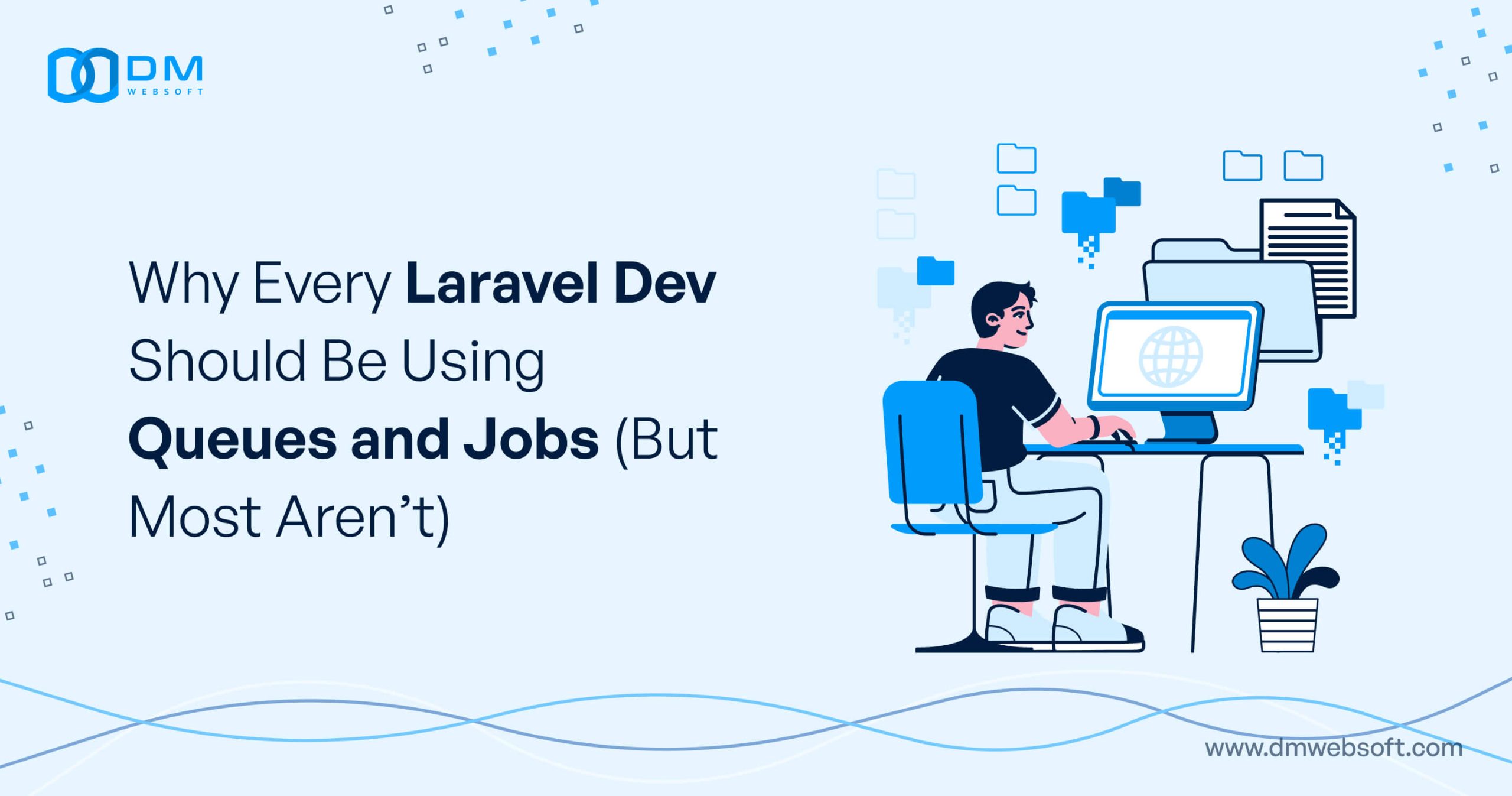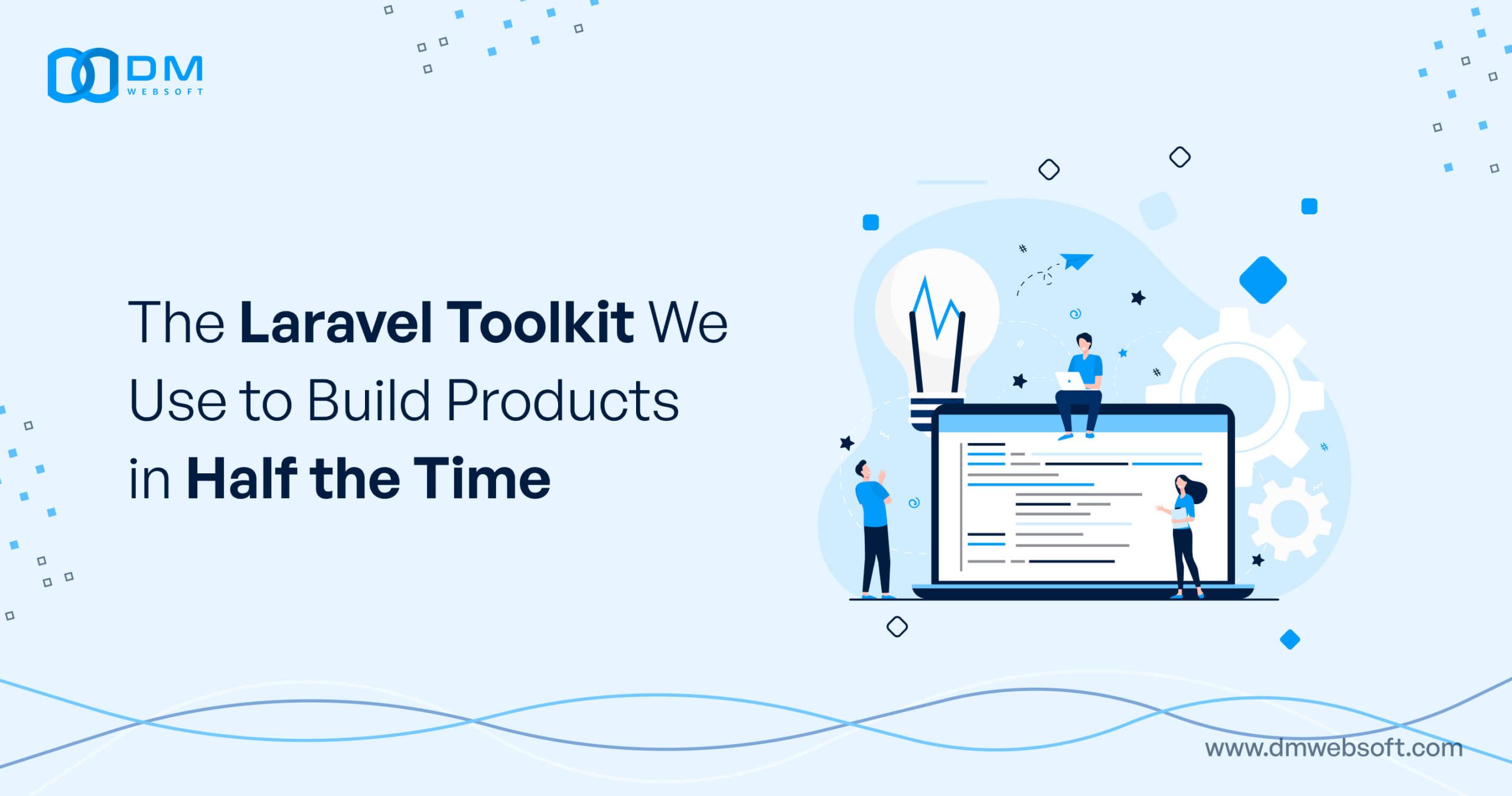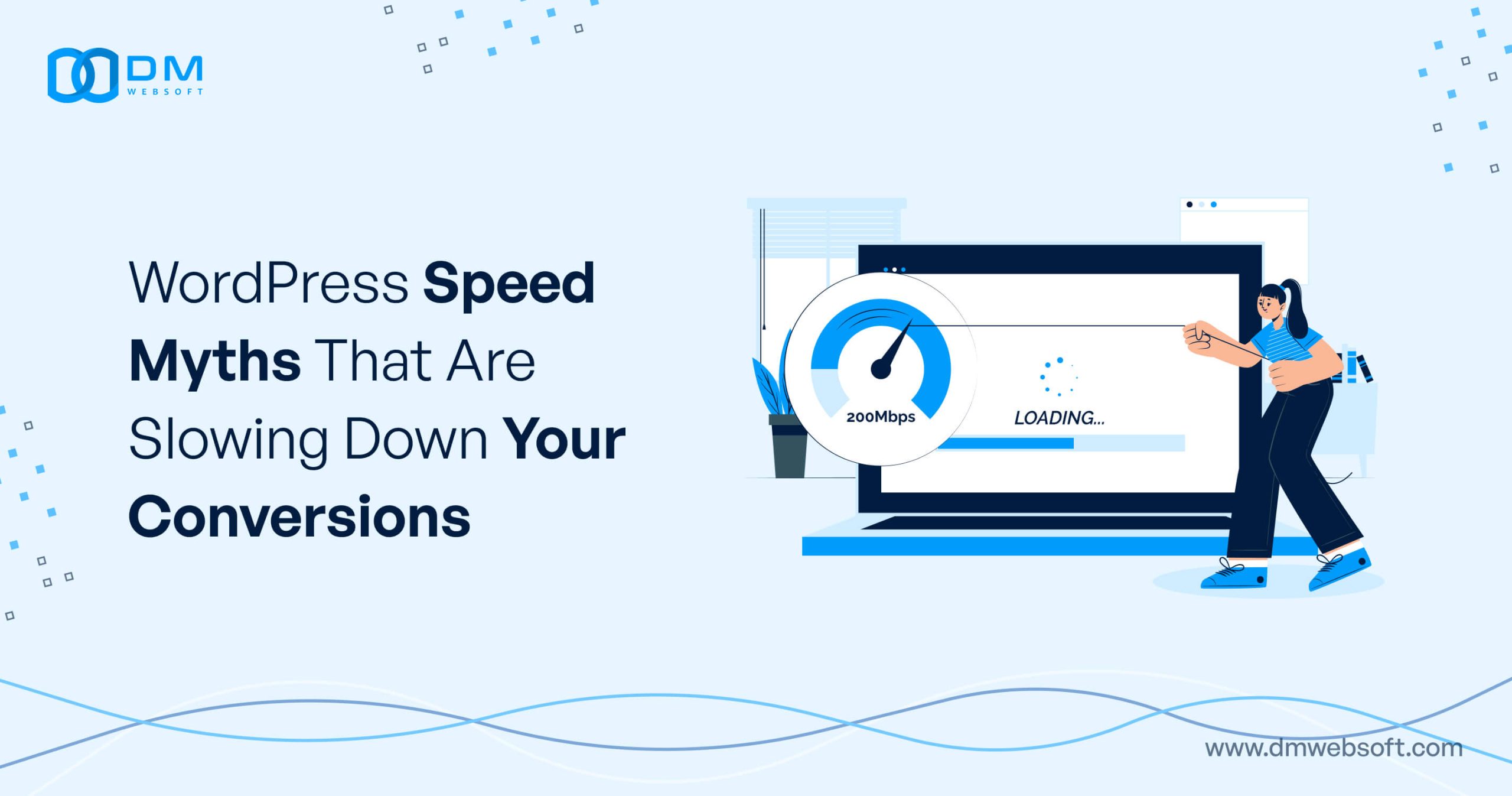DM WebSoft LLP exceeded our expectations! Their seasoned team of experts delivered a website that perfectly captures our brand essence. Their 15+ years of experience truly shine through in their exceptional web development skills.
The Enterprise MVP Paradox: Building Minimal Products for Maximum Contracts

TABLE OF CONTENT
Introduction
Why Enterprise MVPs Are Different from Standard MVPs
Key Steps to Building a Successful Enterprise MVP
The Challenges of Selling an MVP to Enterprise Clients
Agile Development for Enterprise MVPs
Case Study: How DM WebSoft LLP Helped an Enterprise Client Launch a Scalable MVP
How to Transition an Enterprise MVP into a Full-Scale Product
Conclusion: The Right Strategy for Enterprise MVP Success
Get in Touch
Introduction
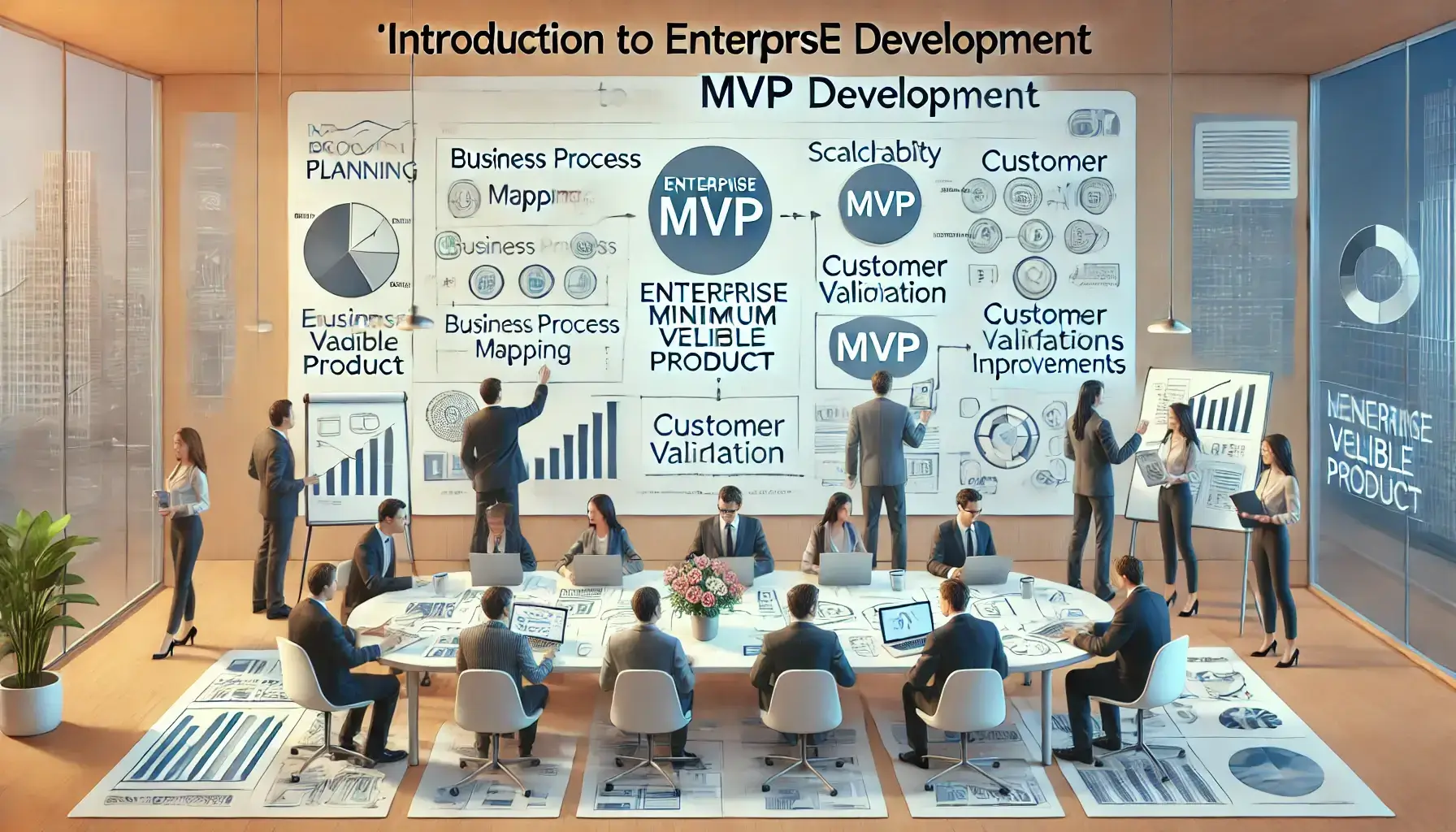
The concept of a Minimum Viable Product (MVP) is well-known in startup land—get out the door early, test, iterate, and scale. With enterprise software, however, the conventional MVP playbook does not apply. Unlike consumer or small-business offerings, where the users will test a lighter-weight version and provide feedback, enterprise clients expect scalability, security, and reliability on day one.
This is the Enterprise MVP Paradox—startups must build a minimal product to validate their idea, but it can’t possibly be that minimal or enterprise clients won’t take it seriously. Large corporations don’t purchase half-baked solutions; they require integration features, compliance necessities, and proof of ROI before they’ll adopt a new platform.
For technology startups and companies selling to enterprises, this paradox presents a big problem: How do you balance speed, budget, and enterprise-level expectations in an MVP? If you make the product too minimal, it won’t gain enterprise adoption. If you make it too comprehensive, it defeats the purpose of an MVP and hogs resources before proving its value.
At DM WebSoft LLP, we specialize in helping businesses create scalable, secure, and market-ready enterprise MVPs, so they meet enterprise needs without overbuilding or overspending. In this guide, we’ll cover why enterprise MVPs must be different, the key strategies to build a high-impact, scalable MVP, and how to secure big contracts with an MVP that meets enterprise standards.
Why Enterprise MVPs Are Different from Standard MVPs
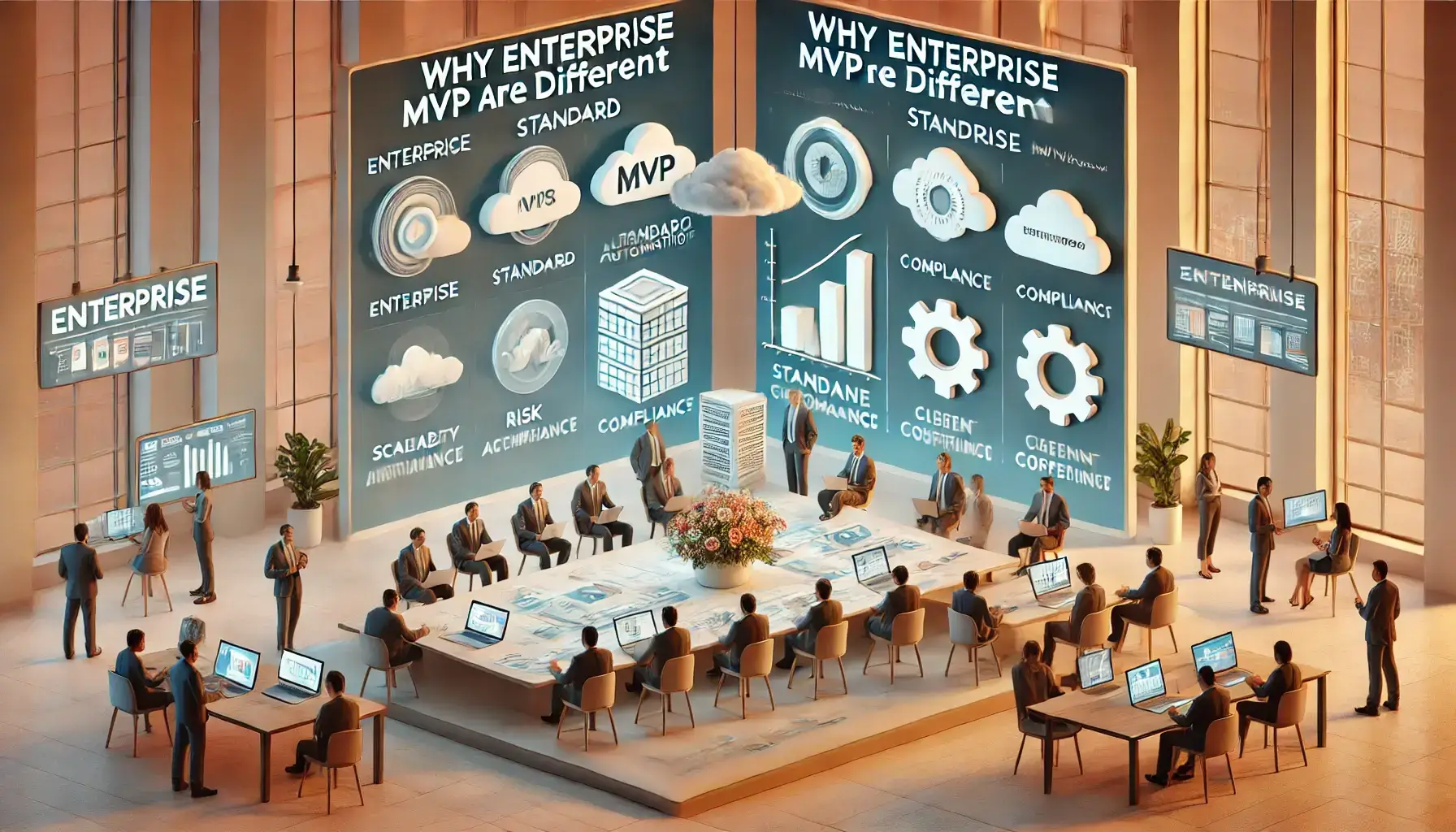
In startup MVP development, the focus is on building a minimal version of a product to test market demand, gather user feedback, and iterate quickly. However, this approach doesn’t always apply to the enterprise world. Large companies have higher expectations, more complex requirements, and longer sales cycles, making the standard MVP model difficult to implement.
One of the biggest distinctions between enterprise and standard MVPs is the level of functionality required. While a B2C or SMB MVP can launch with just a few core features, enterprise buyers expect fully developed workflows, security compliance, and integration capabilities from day one. If an enterprise MVP is too simplistic, it won’t be taken seriously—no CIO wants to present an unproven, incomplete tool to stakeholders.
Another major challenge is the complexity of decision-making. Unlike individual consumers who can quickly decide whether to keep using a product, enterprise buyers must navigate multiple layers of approval before committing. Procurement teams, legal departments, and technical leads must all assess the product to ensure it meets security, compliance, and business process requirements. Without enterprise-grade infrastructure, an MVP won’t survive these rigorous evaluations.
Security and compliance are non-negotiable for enterprise MVPs. While consumer apps can roll out security updates later, enterprise clients require data encryption, role-based access control (RBAC), and regulatory compliance (such as GDPR, HIPAA, or SOC 2) from the start. Without these critical elements, a product won’t even make it past initial IT discussions.
Seamless integration with existing business tools is critical. Most companies already have established workflows with CRMs, ERPs, communication platforms, and legacy systems. If a new product doesn’t integrate well, adoption becomes a major challenge. An enterprise MVP should be developed with an API-first approach to allow seamless integration without disrupting operations.
In addition, the long sales cycle for the enterprise market makes rapid iteration difficult. While startups can change a product overnight based on user feedback, it takes months of testing, onboarding, and internal approvals for enterprise software to make any product changes. That means the initial MVP must be solid enough to withstand lengthy evaluation cycles without introducing unnecessary friction.
The key to surmounting these challenges is finding the right balance between minimalism and business readiness—delivering enough functionality to demonstrate value and secure early contracts without succumbing to the temptation of building out an entire product before validation.
At DM WebSoft LLP, we guide businesses through the MVP development process so that they can launch working, secure, and scalable products without unnecessary delays or misallocated effort. Following, we’ll discuss the most critical steps to a successful enterprise MVP.
Key Steps to Building a Successful Enterprise MVP
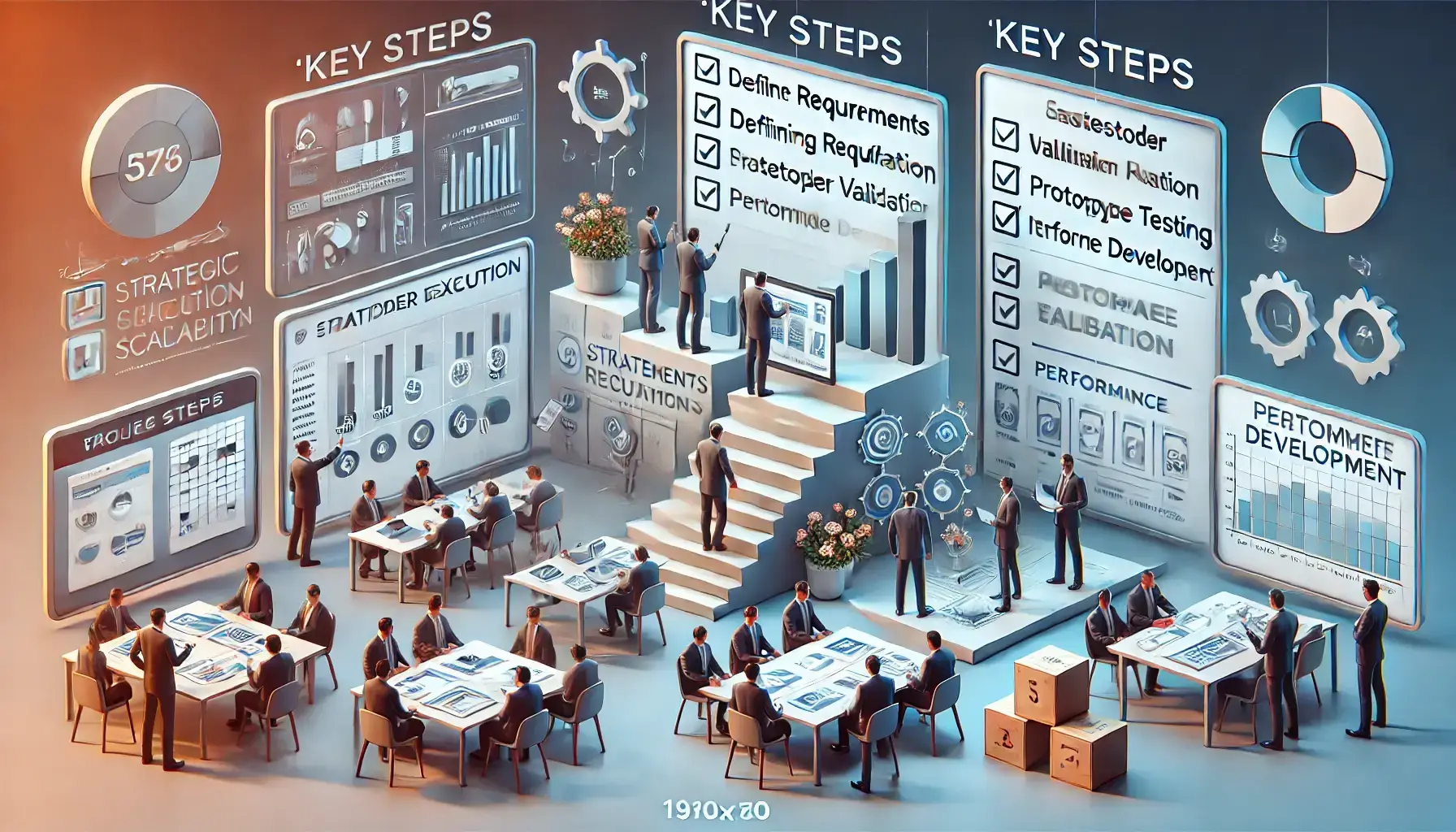
Creating an enterprise MVP requires a strict tradeoff between speed, budget, and enterprise-grade functionality. Unlike consumer products, where the goal is to launch ASAP and iterate thereafter, enterprise MVPs must meet some degree of expectation from day one—or be rejected by potential clients. The following are the most important steps to a successful enterprise MVP launch.
The most critical and initial step is identifying the key business problem the MVP will solve. Unlike B2C MVPs, which can experiment with a variety of different features and iterate based on user feedback, enterprise products must be laser-focused on solving a well-defined, high-value problem.Businesses don’t look for nice-to-have features—they require solutions that streamline operations, reduce costs, or improve efficiency. Customer interviews, analysis of industry pain points, and study of existing workflows work to specify the most valuable functionality for the MVP.
Problem identified, the next step is to rank must-have mission-critical functionality. Instead of trying to build a complete enterprise software suite, the MVP needs to focus on delivering the one or two essential functions that bring immediate value. A successful MVP doesn’t need every bell and whistle—it just needs to prove that the product can solve an important business pain point effectively. Additional features can be added later based on customer input and scaling requirements.
Security and compliance must be built from the ground up as well. Many startups fail in the enterprise market because they treat data security, access control, and compliance needs as afterthoughts. Enterprise customers won’t even consider a product that lacks basic security controls, encryption, and compliance with industry standards like GDPR, HIPAA, or SOC 2. Having role-based access control (RBAC), secure authentication, and data encryption in place ensures the product is compatible with enterprise security standards.
The second essential step is to design with scalability in mind. While the initial MVP must be lean, it must also have a sound architectural foundation that can support future scaling. The majority of enterprise startups fail because they build an MVP that works for small teams but falls apart with enterprise usage. Choosing a cloud-based, modular, API-first approach makes scaling a breeze, integrating a cinch, and adding future performance optimizations without rebuilding the product from scratch a non-issue.
Enterprise clients also expect integration with their existing systems. Unlike consumer stand-alone applications, enterprise software needs to co-exist with CRMs, ERPs, project management tools, and legacy systems. Developing the MVP with an API-first strategy ensures that the MVP will be integrable with business-critical applications like Salesforce, SAP, or Microsoft Teams, thus allowing easy adoption by enterprise clients.
Finally, but not least, the customer onboarding and support experience must be a priority. As opposed to B2C apps, where customers can explore features on their own, enterprise customers must be onboarded, trained, and supported on an ongoing basis. Providing dedicated customer success teams, live demos, and proper documentation guarantees that the adoption process is frictionless. The MVP must be more than a product—it must include a customer engagement and retention strategy.
At DM WebSoft LLP, we guide businesses through all these stages so that they build an enterprise MVP that is viable, scalable, and market-ready for testing. In the next section, we’ll cover the pitfalls of selling an MVP to enterprise buyers and how to overcome them.
The Challenges of Selling an MVP to Enterprise Clients
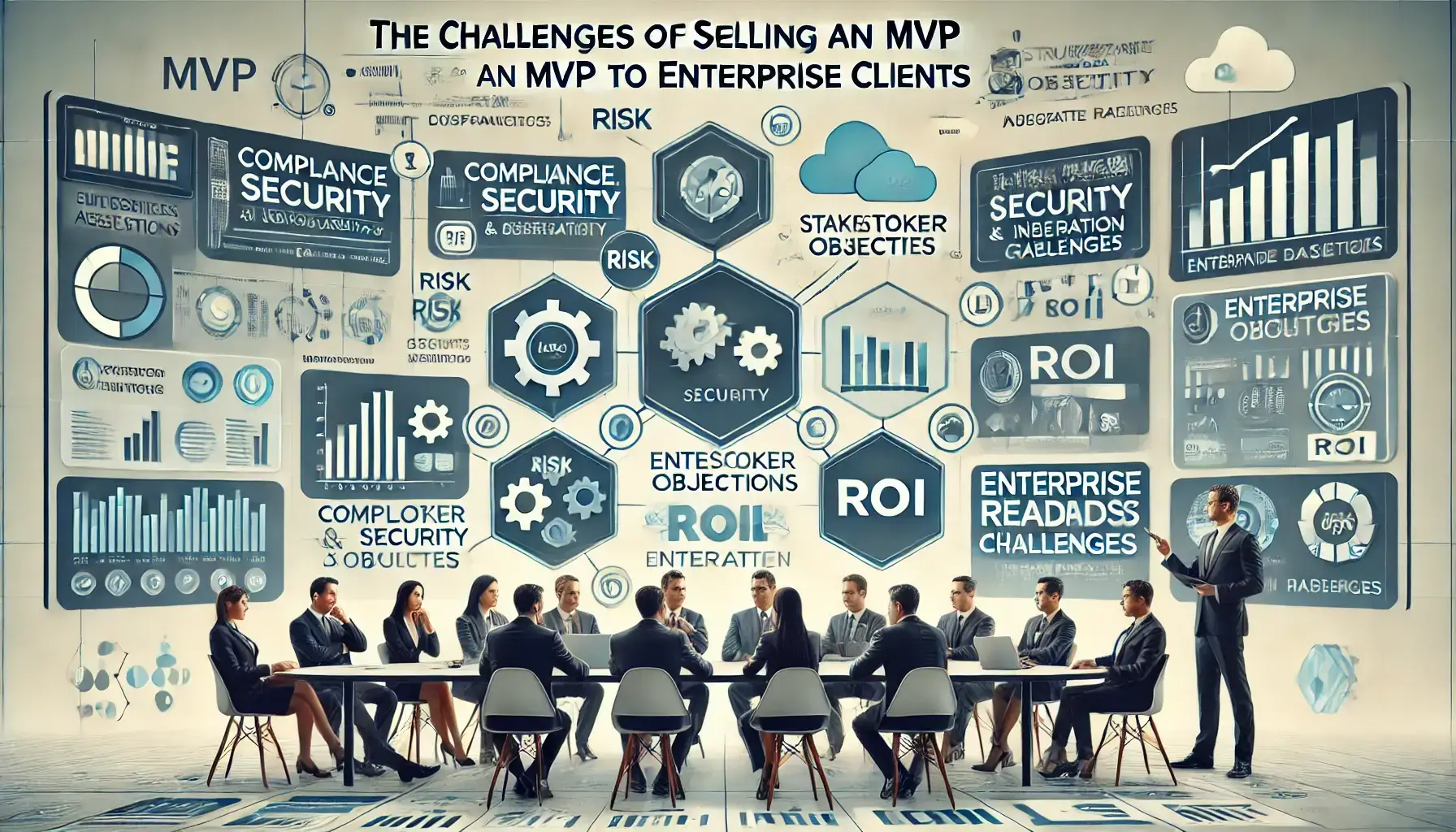
Selling an MVP to enterprise buyers is far more complex than selling to individual consumers or small businesses. Big companies have strict evaluation processes, long procurement cycles, and multiple decision-makers for each purchase. Even if an MVP offers a compelling solution, the enterprise buyer may shy away from making a commitment unless some key issues about security, integration, and ROI are addressed. Here are some of the biggest obstacles in selling an enterprise MVP and how you can work around them.
One of the biggest hurdles is the enterprise buying process. Unlike consumer applications, where users simply sign up and start using a product, enterprise purchases require approvals from multiple stakeholders—IT departments, finance teams, compliance officers, and department heads. This hinders adoption as companies conduct internal reviews, security audits, and legal evaluations before they commit to a new tool. To streamline the process, companies should provide easy-to-access documentation on security, compliance, and ROI so that decision-makers have everything they require upfront.
One challenge is building trust with enterprise customers. Large corporations are not keen on adopting untested or early-stage products, especially if the vendor is a startup with no history. In contrast to B2C buyers, who are more willing to try out new offerings, enterprise buyers need to be assured that the product does what it claims to do and delivers measurable business value. Offering pilot programs, case studies, and references from early adopters can help validate the product’s potential and build credibility.
Integration problems also pose a significant challenge. Most enterprises already possess established software ecosystems, and therefore any new tool must integrate well with existing systems like CRMs, ERPs, and security platforms. If an MVP lacks API compatibility or integration capabilities, enterprises will hesitate to utilize it. To overcome this, enterprise MVPs must be designed with an API-first approach so that they can integrate well with enterprise workflows right from the start.
Enterprise clients also anticipate strong service-level agreements (SLAs) and support commitments. While individual users might accept some downtime or minor problems, businesses require guaranteed uptime, responsive support, and clear data protection policies. If an MVP is unscalable, lacks performance commitments, or does not include 24/7 support, enterprises will dismiss it as unreliable. Adding service commitments, customer success teams, and proactive support channels can mitigate these risks and improve customer retention.
Pricing is also essential. Most startups underprice their MVPs, thinking that low price will drive adoption. Enterprise buyers, on the other hand, associate higher prices with higher quality—if an MVP is too low-priced, companies may think it lacks enterprise-class functionality or a long-term chance of success. The best approach is to offer tiered pricing, pilot-based agreements, or per-seat license models that align with enterprise budgeting processes while allowing for a path to sustainable revenue growth.
Finally, showing ROI in advance is critical. As opposed to consumers, who may purchase a product based on personal preference, business customers need to see concrete proof of how the MVP improves efficiency, reduces cost, or creates revenue. Creating ROI-oriented case studies, quantifiable performance indicators, and analytics dashboards helps decision-makers justify their investment in the MVP.
At DM WebSoft LLP, we specialize in helping enterprises navigate these issues so that their enterprise MVPs are not just technically feasible but also market-feasible and strategically aligned for enterprise adoption. Next, we will cover how Agile development is an essential component of enterprise MVP success.
Agile Development for Enterprise MVPs
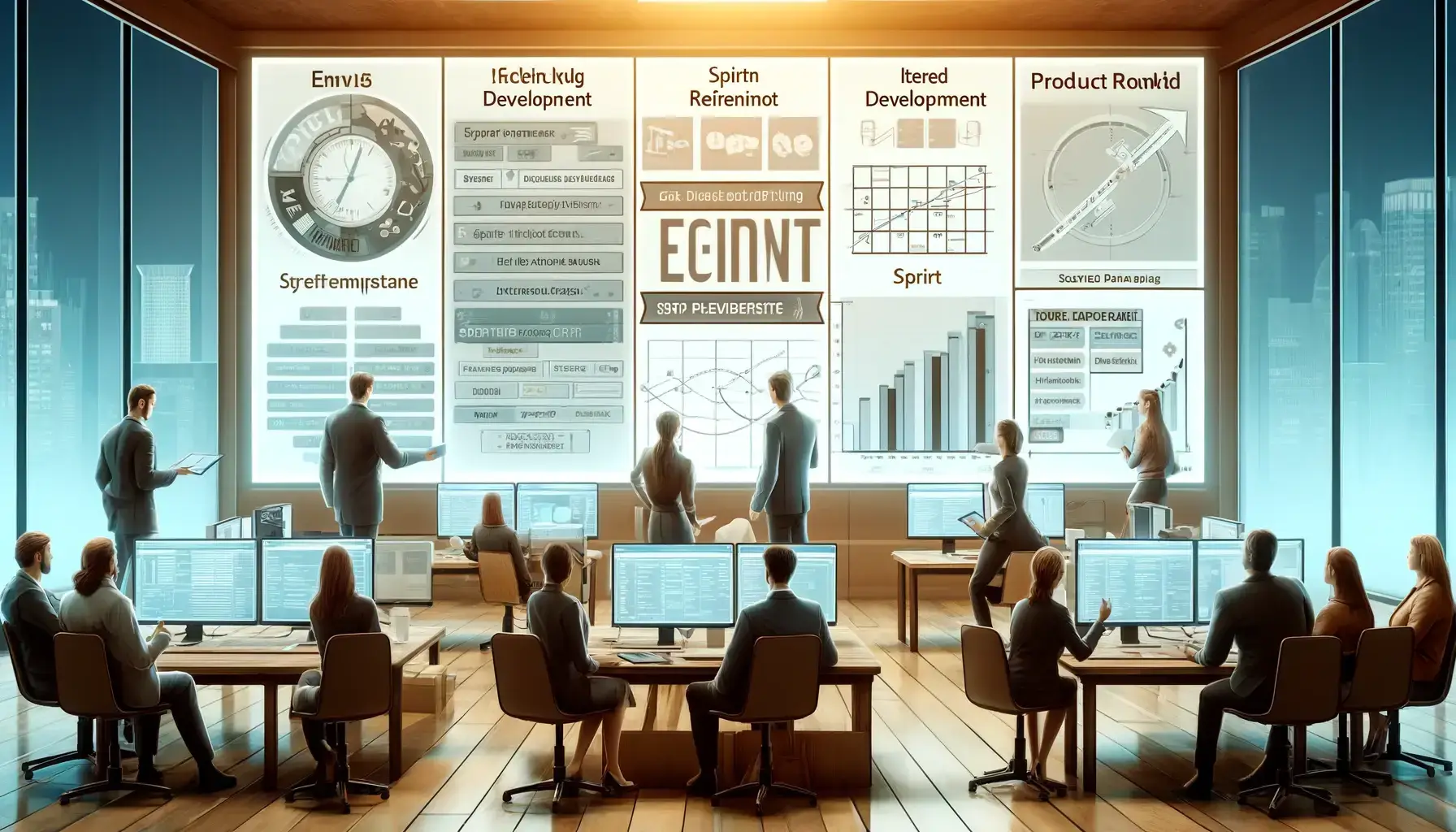
Creating an enterprise MVP goes beyond simply launching a basic product; it involves a commitment to ongoing refinement and adaptation to meet enterprise needs while ensuring flexibility. This is where Agile development excels. Unlike the rigid and lengthy processes of the traditional waterfall model, Agile allows teams to release functional versions more quickly, gather user feedback, and iteratively improve the product.
- Why Agile is Ideal for Enterprise MVPs: One of Agile’s key strengths is its iterative approach. The approach is that instead of delivering a fully featured product all at once, Agile emphasizes prioritizing essential functionalities such that each release delivers real business value. It is especially attractive to enterprise buyers who want to see measurable improvements before making a commitment to company-wide rollout.
- Customer-Centric Product Evolution: The difference between developing enterprise software and B2C products is that enterprise solutions rely on direct input from key stakeholders instead of gathering feedback from a large number of users. Agile allows teams to work closely with enterprise clients at every stage, so their product features evolve according to the actual business needs instead of assumptions.
- It fits seamlessly into enterprise systems: Enterprises are generally working within an established tech ecosystem so integration needs to be seamless. Agile development accommodates incremental updates such that CRMs, ERPs, and automation tools can seamlessly interact without disrupting existing workflows; it minimizes downtime and quickens the adoption rate.
- Security & Compliance from the Start: It will also ensure security and regulatory compliance. Instead of waiting for the end of development to address security concerns, Agile embeds these measures into each sprint. This ensures continuous compliance with all types of industry regulations like GDPR, HIPAA, and SOC 2, avoiding expensive legal and security issues in businesses.
Case Study: How DM WebSoft LLP Helped an Enterprise Client Launch a Scalable MVP
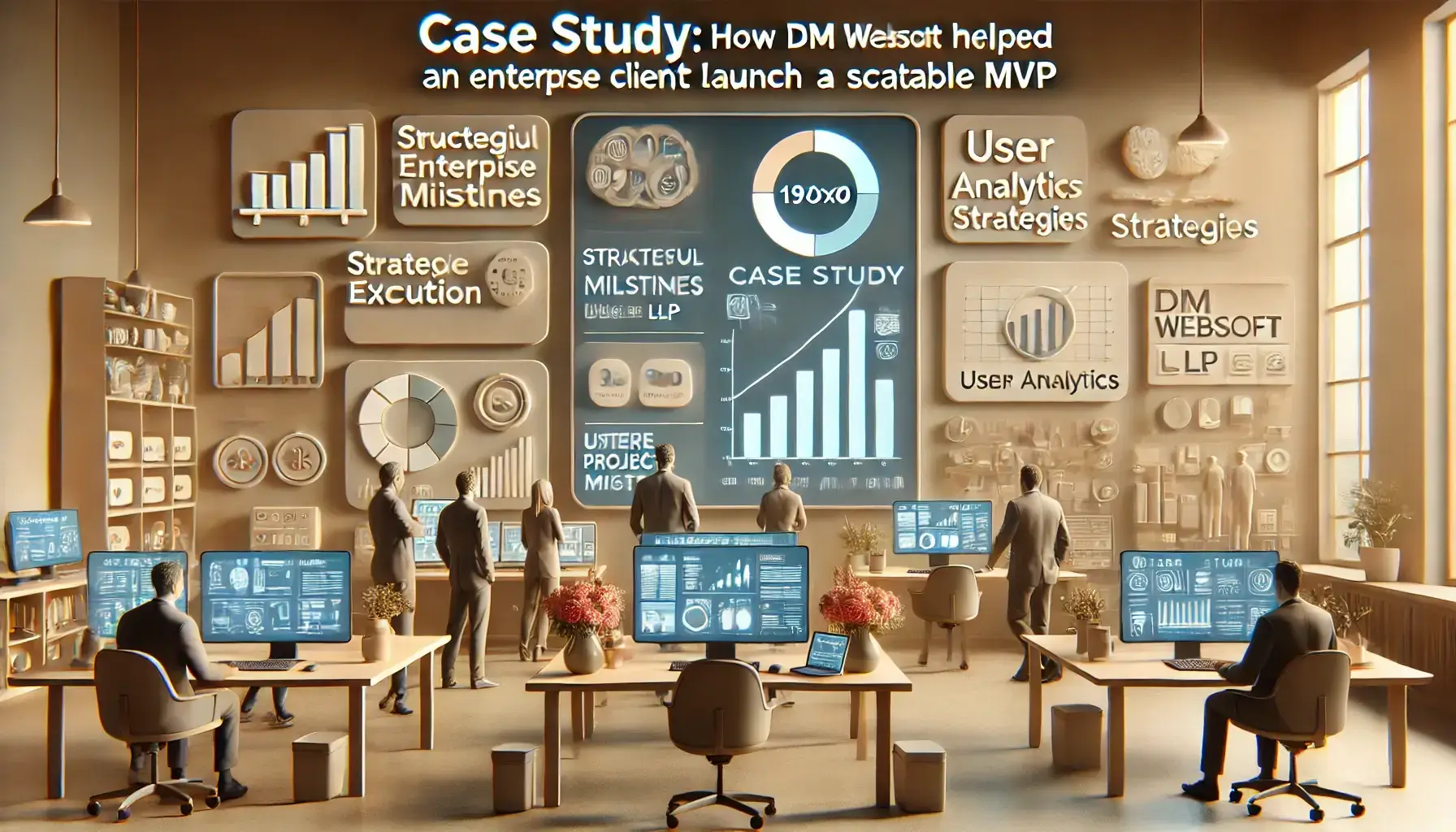
We at DM WebSoft LLP have guided and helped hundreds of companies successfully sail through the rough waters of MVP development for large-scale enterprise organizations to be product-ready. For example, a highly successful recent project involved taking up a work with a B2B SaaS startup seeking to create an optimization platform to manage the complex supply chain on a large-scale basis for major manufacturers and logistics companies.
The Challenge
Their client wanted to provide an AI-based supply chain management platform for enterprises, where they could somewhat reduce the operational inefficiencies and also forecast the need for their inventory thereby optimizing their distribution routes. Given below are the difficulties they encountered, however:
- High expectations on data analytics from enterprise clients: Enterprise clients required real-time data analytics, compliance certifications, and smooth ERP integration before adopting.
- Long sales cycles: Enterprise deals required detailed procurement processes, pilot testing, and board-level approvals.
- Scalability concerns: The platform had to be capable of handling large volumes of data while ensuring 99.9% uptime and performance reliability.
- Security and compliance: Given that the platform would process sensitive logistics data, it needed to comply with ISO 27001, GDPR, and industry-specific security standards.
The client knew that rushing a lightweight MVP to market wouldn’t work—they needed to develop a strategic, functional MVP that met enterprise demands while remaining lean and cost-effective.
The Solution
We collaborated with the client to build a structured MVP roadmap that prioritized:
- A targeted feature set – Instead of overbuilding, we focused on the most critical pain points for enterprises:
- AI-driven demand forecasting to prevent overstocking and supply chain disruptions.
- Real-time shipment tracking integrated with IoT and GPS data.
- Automated compliance reporting to reduce manual errors in regulatory filings.
- Scalability and performance – The MVP was built on a microservices architecture, ensuring that as demand grew, new functionalities could be added without disrupting core operations.
- Enterprise integrations – We developed pre-built connectors for SAP, Oracle, and Microsoft Dynamics, allowing enterprises to seamlessly integrate the platform into their existing workflows.
- Security-first development – Data encryption, role-based access control (RBAC), and compliance with GDPR and SOC 2 were embedded into every sprint.
- Pilot program strategy – Rather than launching a public MVP, we assisted the client in running a controlled pilot program with three large enterprises so that they could perfect the product based on real-world feedback before scaling.
Results
- Pilot-to-paid conversion success: Two out of the three enterprise clients transitioned from pilot testing to full contracts within six months.
- Scalable architecture: The microservices-based MVP scaled up to 5x the data volume without any performance degradation.
- Funding secured: With a validated MVP and real enterprise clients, the startup raised $5 million in Series A funding to expand its feature set and customer base.
- Reduced procurement friction: By focusing on security, compliance, and enterprise integrations from day one, the product was able to pass IT and procurement approvals faster than competing solutions.
This case study illustrates how the strategic MVP approach with Agile development and enterprise-grade architecture leads to faster adoption, lower sales resistance, and long-term scalability.
At DM WebSoft LLP, we help B2B startups develop market-ready enterprise MVPs that align with corporate expectations, ensuring high adoption rates and long-term growth.
In the next section, we’ll conclude with the key takeaways from the Enterprise MVP Paradox and how businesses can succeed in this space.
How to Transition an Enterprise MVP into a Full-Scale Product
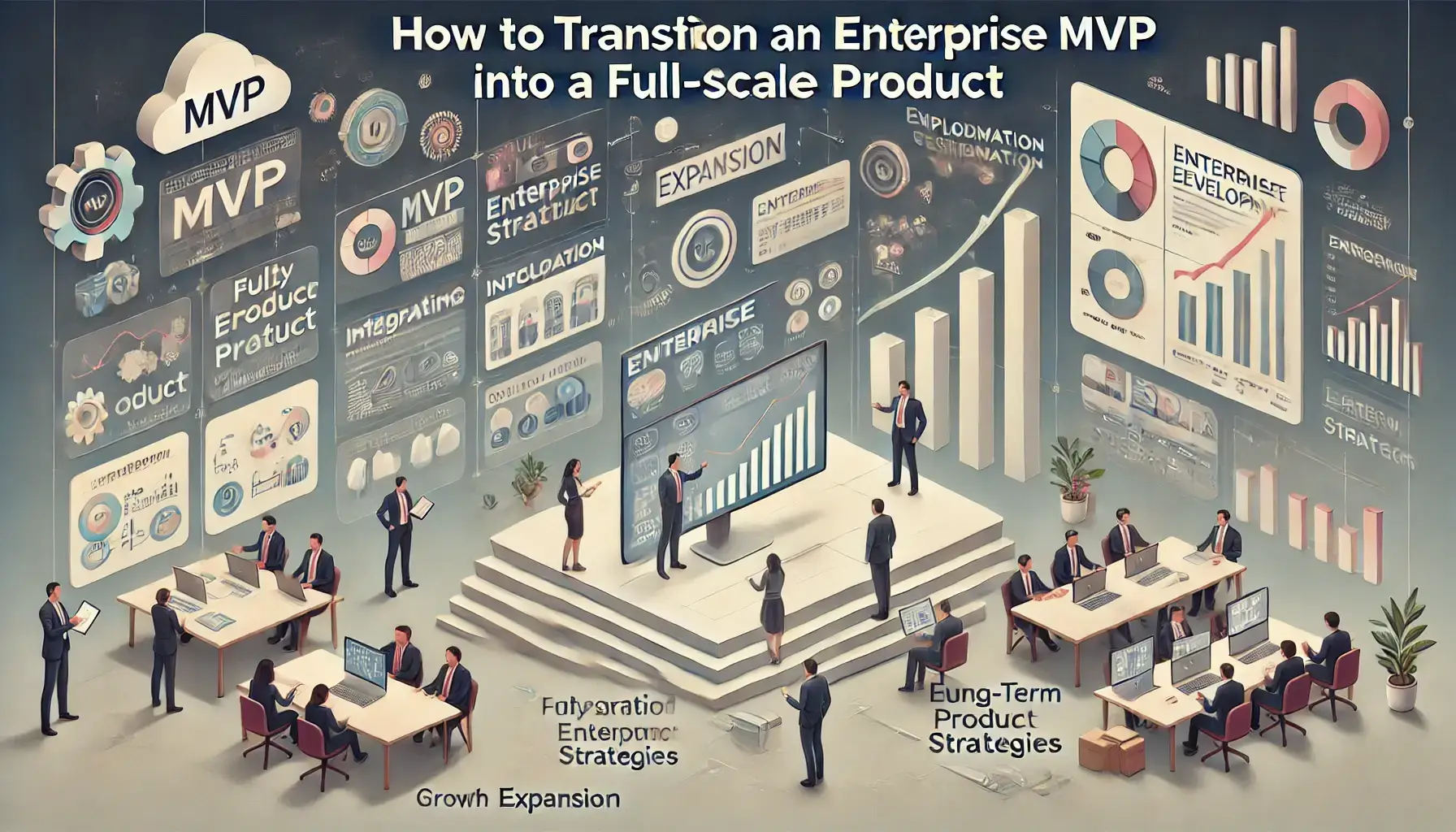
An enterprise MVP is merely the starting point; the hard part is converting it into a full-scale, enterprise-ready product that can service larger customer bases, expanded feature sets, and long-term scalability. Many startups fail at this stage, scaling too quickly without solid infrastructure or failing to move beyond their MVP, losing the interest of potential enterprises. The following are the key steps involved in successfully converting an MVP into a market-leading enterprise product:.
The MVP should have been developed with a lean but impactful feature set to solve a critical business problem. As enterprises begin using the product, gathering structured feedback from IT teams, department heads, and end users can help identify which additional features add the most value. It should be considered prioritizing high-demand functionalities such as workflow automation, AI-driven analytics, and multi-user role management while avoiding unnecessary feature bloat.
Scale performance and infrastructure. An MVP may have suited when only one or two few big clients adopted the system, but a system with many high-traffic, large data, or complex multi-tenancy scenarios will need to support scalability. Investments in cloud scalability, database optimization, and auto-scaling mechanisms will ensure that the product remains reliable under increasing demand. Most successful enterprise products move from monolithic architecture to microservices, allowing them to scale individual services without disrupting the entire platform.
Of course, security and compliance become much more important as it transitions from MVP to production-readiness. While an MVP needs to have basic security features, a full-scale enterprise solution requires full compliance with industry standards such as SOC 2, ISO 27001, HIPAA, and GDPR. Details in Security Documentation, a set of successful penetration testing, and compliance certifications will be included by the enterprises before the contracts are expanded. Implementing advanced encryption, audit logs, and identity management solutions (such as SSO and MFA) strengthens security and ensures regulatory approval.
Seamless API integrations and ecosystem compatibility often play key roles in expanding the product enterprises. Enterprises rely upon numerous software platforms such as ERP, CRM, and HR management systems, and your product needs to couple with those systems gracefully. Custom API endpoints, integration with well-known platforms, for example, Salesforce, SAP, Microsoft Teams, and third-party app marketplaces simplify adoption and make the product an integral part of enterprise workflows.
Lastly, an enterprise support and service model must also be established. Unlike small-business or consumer products, where self-service models work quite well, enterprise customers look for dedicated account managers, priority support, SLAs, and ondemand training resources. Ensuring a customer success team is established, offering technical implementation support, and carrying extensive onboarding sessions can help increase customer retention and drive larger enterprise contracts.
DM WebSoft LLP is assisting businesses to smoothen out the MVP to full-scale enterprise solutions by offering them infrastructure, security, and feature expansion strategies for long-term success. It helps a product evolve from the MVP stage into an industry leader by focusing on scalability, integrations, and enterprise-grade support.
Conclusion: The Right Strategy for Enterprise MVP Success
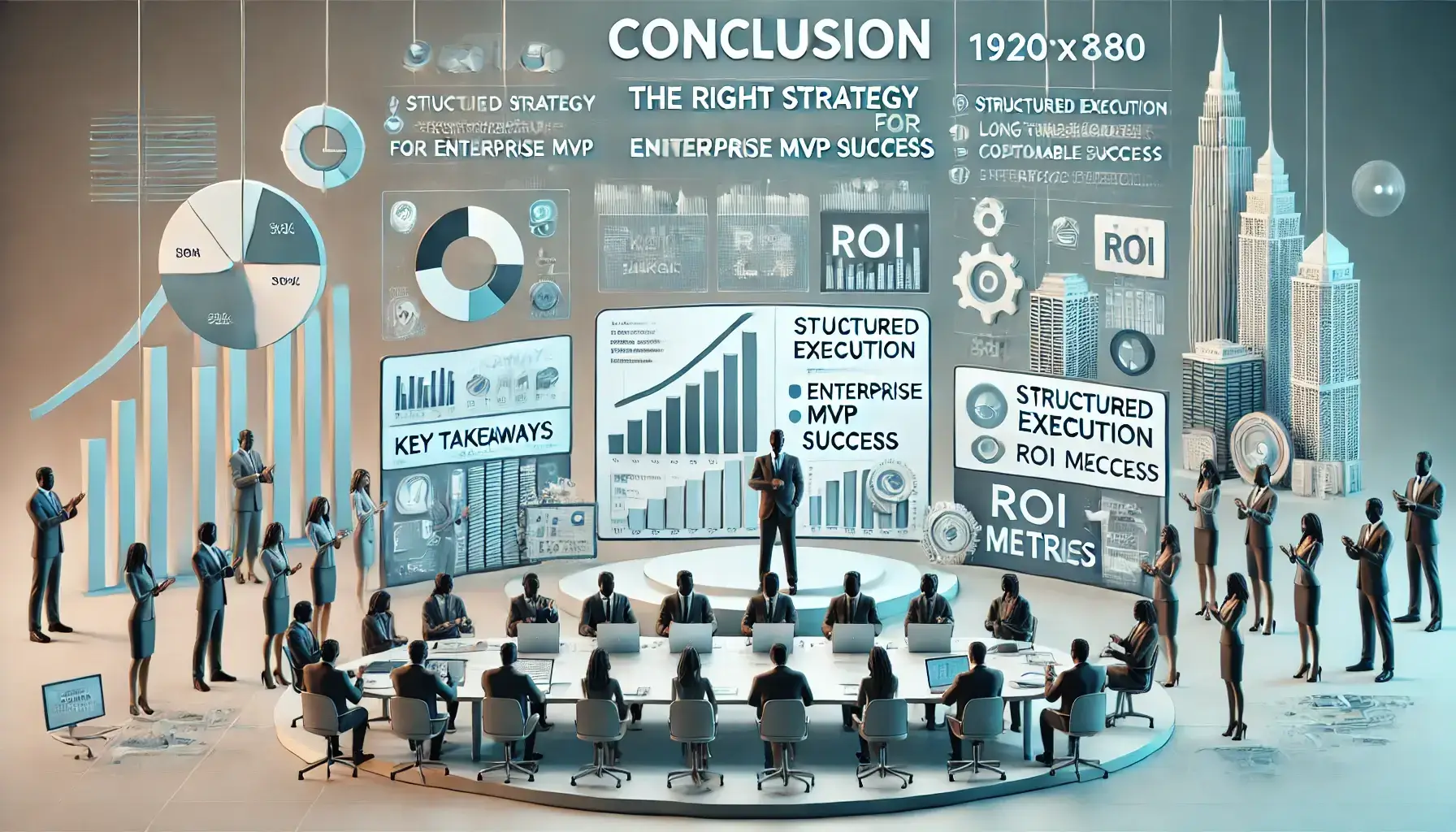
The Enterprise MVP Paradox therefore poses a challenge: how can one develop a minimal product to match the lofty expectations of enterprise clients? Unlike classic MVPs, which emphasize quick iteration and lightweight feature sets, enterprise MVPs require a careful balance between lean development and enterprise-level functionality.
The key to success lies in strategic planning, targeted feature development, and early enterprise validation.
A well-built enterprise MVP should
- Define, present an interesting, challenging, and strategic business problem worthy of enterprise-level investment.
- Security, compliance, and integrations from day one to align with the corporate IT expectations.
- Take an Agile approach to development for balancing fast iteration with enterprise reliability.
- Use pilots and case studies to build credibility and accelerate adoption within the enterprise.
- Scalability: allow the MVP to grow into a full-fledged enterprise solution without significant overhauls.
- Startups and tech firms will easily navigate their long sales cycles, complex procurement processes, high customer expectations, large contracts, and long-term enterprise partnerships through this approach.
At DM WebSoft LLP, we specialize in the development of scalable, secure, and enterprise-ready MVPs. We are experts in bringing a business’s idea to reality with fully functional and revenue-generating enterprise solutions.Whether you’re building a B2B SaaS platform, AI-powered enterprise tool, or industry-specific software, our expertise ensures a smooth development and go-to-market process.
Ready to build an enterprise MVP that secures major contracts? Contact DM WebSoft LLP today, and let’s develop a strategic MVP tailored for enterprise success.
Whether you’re building a B2B SaaS platform, AI-powered enterprise tool, or industry-specific software, our expertise ensures a smooth development and go-to-market process.
Enterprise MVPs require scalability, security, and integration capabilities from the start, unlike standard MVPs, which focus on quick validation and iteration.
Agile ensures faster iterations, customer-driven improvements, and phased rollouts, helping startups refine their MVPs without disrupting enterprise operations.
DM WebSoft LLP provides market research, secure architecture, API-first development, and MVP scaling strategies tailored for enterprise adoption.
Challenges include complex procurement processes, high security requirements, long sales cycles, and the need for seamless system integrations.
Get Started Now !
What’s the Process ?
Request a Call
Consultation Meeting
Crafting a Tailored Proposal
Get Started Now !
Real Stories, Real Results. Discover What Our Clients Say

Working with DM WebSoft LLP was a game-changer for our business. Their technical prowess and innovative solutions transformed our online presence. A highly recommended web development agency with a stellar track record.

We are thrilled with the results DM WebSoft LLP delivered. Their deep understanding of web development coupled with years of expertise ensured a seamless and visually stunning website. True professionals!

In a digital age where first impressions matter, DM WebSoft LLP crafted a website that speaks volumes. The team’s attention to detail and commitment to quality set them apart. Thank you for making our vision a reality.

DM WebSoft LLP’s team demonstrated unparalleled expertise. Their ability to navigate complex technical challenges with ease is truly commendable. Choosing them for our web development needs was the best decision.

Exceptional service, unmatched skills! DM WebSoft LLP stands out as a leading web development agency. Their collaborative approach and commitment to excellence make them our go-to partner for all things web-related.

DM WebSoft LLP turned our ideas into a digital masterpiece. The seamless communication and timely delivery of our project showcased their professionalism. Highly impressed with the level of creativity and skill.

Our experience with DM WebSoft LLP was nothing short of amazing. From concept to execution, their team provided top-notch web development services. A reliable partner for businesses looking to elevate their online presence.

DM WebSoft LLP’s team of tech experts is second to none. Their wealth of experience reflects in the quality of their work. Our website not only meets but exceeds industry standards, thanks to their dedication.

Choosing DM WebSoft LLP was the best investment for our web development needs. Their team’s proficiency, coupled with a customer-centric approach, made the entire process smooth and enjoyable. A pleasure to work with!



